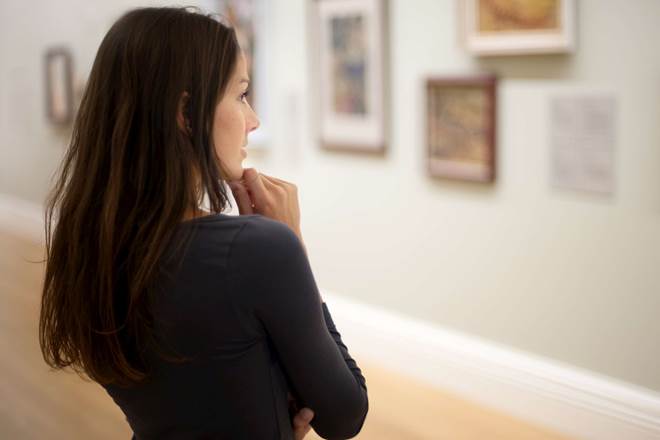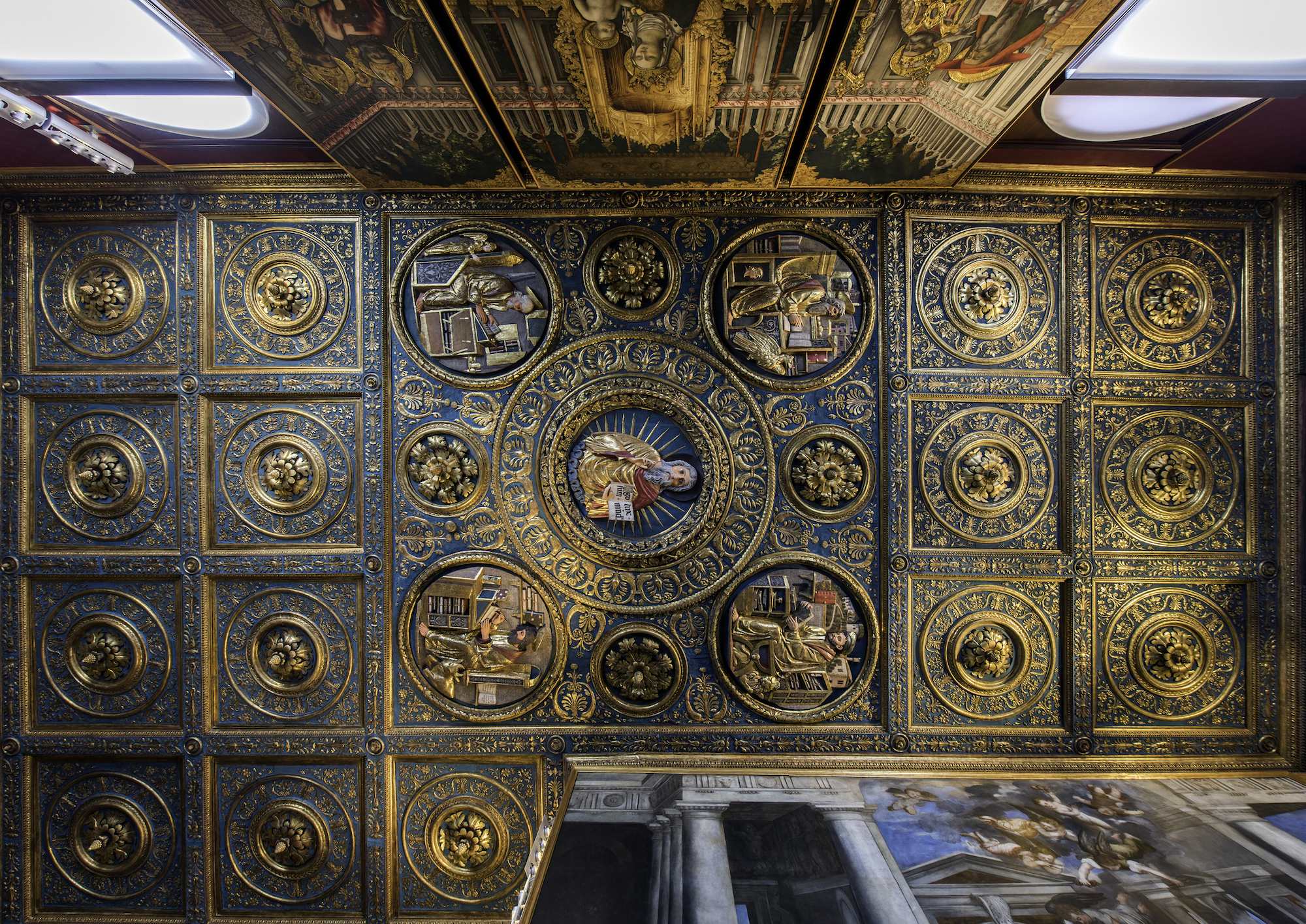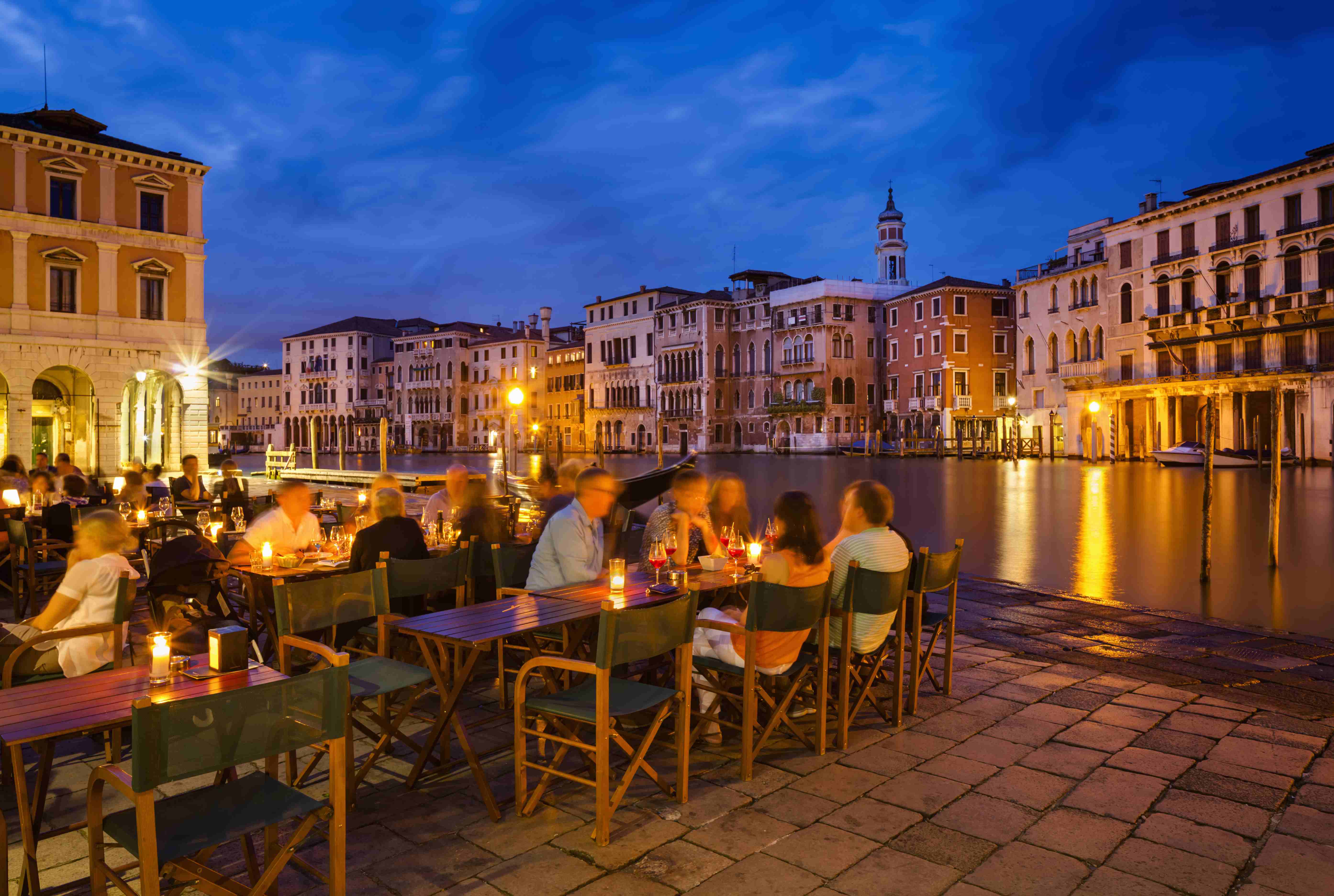Venice has a rich and varied art scene, and Gallerie dell’Accademia is one of the most famous galleries in the city. Home to pre-19th century Italian and European artworks, discover works by Venetian artists like Titian, Tintoretto and Canaletto amongst the displays here.
What’s in this guide?
- Gallerie dell’Accademia history and facts
- What to see at the Gallerie dell’Accademia
- Restaurants, bars and shops nearby
- Opening times and ticket prices
How to get to the Gallerie dell’Accademia
The gallery is located in the Dorsoduro sestiere (district), a 23-minute walk from Venezia Santa Lucia train station. The Peggy Guggenheim Collection and the Pinault Collection at Punta della Dogana are just a 5-minute walk along the Grand Canal from Gallerie dell’Accademia. So, why not plan a full day of gallery-hopping and visit some modern art museums, too?
There’s plenty to see in this vibrant area of Venice, from the Basilica of Santa Maria della Salute to the many palaces along the Grand Canal. Finished sightseeing for the day? Browse the independent boutiques around Dorsoduro and neighbouring San Samuele, then head to a wine bar or canalside cicchetti (small snack) spot.
Galleria dell’Accademia history and facts
The Galleria dell’Accademia was initially called the Accademia di Belle Arti di Venezia (Venice Academy of Fine Arts). It was founded in 1750, one of the first institutions to study art restoration, led by Pietro Edwards.
During Napoleon's rule in the early 19th century, it was renamed the Royal Academy of Fine Arts and moved to the Scuola della Carità. The collections are still housed here today. The impressive building dates back to 1340, commissioned by the Scuole Grandi charitable organisation that taught various skills to the people of Venice, including music at this location.
In 1879 the gallery became independent from the Academy of Fine Arts but continued to share the same building until 2004. The latter is now housed in a former hospital in Dorsoduro, built in the 16th century.
The collection
The collection at the Gallerie dell’Accademia has changed and grown over the years. It began with notable Italian and European artworks from the 13th to 18th century to train young artists in various styles and traditions. Many were removed during the reign of Napoleon and taken to Paris, although some have since been repatriated.
Most artworks were acquired through donations by previous students or wealthy Venetian collectors who bought the works to adorn their palaces. Others were found in the Scuola della Carità when the gallery moved here.
Over time, the decision was made to focus solely on Venetian painting. Today, the Gallerie dell’Accademia is known globally for its rich collection of pre-19th century art from across the Veneto region.
What to see at Gallerie dell’Accademia
With over 800 artworks in the Gallerie dell’Accademia’s collection, there’s plenty to see! Although not all of the works are permanently on display, these are some of the pieces you can expect to encounter during your visit.
Leonardo da Vinci, Vitruvian Man
Leonardo da Vinci’s famous drawing, Vitruvian Man (ca.1490), is one of the highlights of the Accademia’s collection. However, you’ll be lucky to see it when you visit the gallery, as it’s rarely on display. The delicate paper makes it highly sensitive to light and temperature changes.
Vitruvian Man demonstrates a fusion of art and science, acting as a reference for understanding human proportion. Leonardo da Vinci based the drawing on the work on the theories and writings of the ancient Roman architect Vitruvius.
Giovanni Bellini, San Giobbe Altarpiece
During the Italian Renaissance, the Venetian painter Giovanni Bellini was considered revolutionary for using rich colour and atmospheric landscapes. His pupils included Giorgione and Titian.
The San Giobbe Altarpiece (ca.1487) is an oil painting depicting a sacred conversation between the Virgin and Child with saints. It was a popular subject for many Italian Renaissance artists. Still, Bellini’s rendition is unique as it was designed in situ, depicting the interior of the Church of San Giobbe in Venice.
Giorgione, The Tempest
Giorgione was an Italian Renaissance painter and founder of the Venetian school alongside Titian. Little is known about his life, and only six works attributed to the artist exist today, including The Tempest (1506-08).
The meaning of the painting is widely debated. It depicts a semi-nude woman feeding her baby on the right of the canvas whilst a man – possibly a shepherd or soldier – stands on the left. A storm approaches in the background, hence the work’s name.
Titian, Pietà
Considered one of the masters of Italian painting, Titian’s Pietà (1575-76) was amongst his final works. The oil painting was left incomplete, to be finished by Palma Giovane. Very little was added, and he tried to match Titian’s style.
The Pietà scene, depicting the Virgin Mary holding Christ after his crucifixion, was popular with many medieval and Renaissance artists. In contrast to other depictions, Titian’s work is dark and brooding, like many of his later works.
Canaletto, Perspective View with Portico
Canaletto was an 18th-century painter and member of the Venetian school, known for painting cityscapes of his homeland, Venice, and capricci (imaginary views). Perspective View with Portico (1765) depicts the courtyard of the Ca’ d’Oro palace in a fictional setting, true to Canaletto’s capricci style.
Tintoretto, Cain and Abel
Tintoretto was a 16th-century Venetian painter working in the Mannerist style. Cain and Abel (1550-53) is one of four paintings depicting scenes from the book of Genesis. These works were made for the Scuola della Trinità in Venice to teach students how to paint nudes, as Tintoretto was considered a highly accomplished figure painter.
Lorenzo Lotto, Portrait of a Young Man
Lorenzo Lotto was an Italian painter working during the late 15th and early 16th centuries. Although Lotto was born in Venice, he worked throughout Italy. Many believe Bellini and Giorgione influenced his work.
Portrait of a Young Man, or Portrait of a Gentleman in His Study, was painted in the late 1520s. Lotto depicts a young man turning his back on worldly pleasures, symbolised by the lute and hunting horn, to focus on more important affairs.
Paolo Veronese, The Feast in the House of Levi
The Feast in the House of Levi (1573) is an oil painting by the Italian Renaissance painter Paolo Veronese. It is one of the most enormous canvases of the 16th century, measuring 5.6m x 13.9m. It depicts a banquet with Christ at the centre, painted for the Dominican friary at the Basilica of Santi Giovanni e Paolo, in Venice’s Castello sestiere.
Restaurants, bars and shops near Gallerie dell’Accademia
Although Dorsoduro is home to many of Venice’s most popular attractions, the area also has plenty of great places to eat, drink and shop.
Best restaurants near Gallerie dell’Accademia
Whether you want to grab lunch on the go or enjoy traditional Venetian cuisine in an authentic trattoria, these are the best restaurants and cafes near Gallerie dell’Accademia:
- Agli Alboretti
- Trattoria al Cugnai dal 1911
- Osteria Enoteca ai Artisti
- Ristorante San Trovaso
- Ristorante La Bitta
- Bar alla Toletta
- Panini e Vini da Babbo
Discover more of Venice’s best restaurants to enjoy great food wherever you are in the city!
Best bars near Gallerie dell’Accademia
Fancy a drink after a busy day sightseeing in Venice? These are the best bars near Gallerie dell’Accademia, from canalside spritz and cicchetti bars to cocktail lounges and pubs:
- Corner Pub
- Osteria al Squero
- Do Draghi
- Caffe Rosso
- Bar ai Artisti
- Chet Bar
- Margaret Duchamp
Want to find out more about the best nightlife areas in Venice? Our dedicated guide has you covered, whether you’re planning a romantic evening or an all-night party.
Best shops near Gallerie dell’Accademia
The sestiere of Dorsoduro has many independent shops, so it’s a great place to find unique treasures and souvenirs from your trip. Cross the Ponte dell’Accademia beside the gallery into the San Samuele neighbourhood for more artisan workshops and boutiques.
Looking for high street shops or luxury designer goods? Venture towards St. Mark’s Square from the gallery, where you’ll find Venice’s main shopping areas. Explore more of the city’s best shopping and markets in our dedicated guides.
Opening times and ticket prices
Gallerie dell’Accademia is open daily from 08:15 to 19:15, except on Mondays when it closes at 14:00. Standard tickets cost €12*, whilst EU citizens aged 18 to 25 can visit for €2*. Under 18s get free entry to the gallery whilst concessionary rates are available for disabled visitors, school groups and others.
Prices correct as of March 2022
Travelling by train to Venice?
If you're planning to visit Venice, why not travel by train? Travelling to Venice by train is easy due to the high-speed rail connections operated by Trenitalia and Italo. You can travel to Venice from some of the most popular locations in Italy, including Peschiera del Garda to Venice (1h 16m), Verona Porta Nuova to Venice (1h) and Trieste Centrale to Venice (1h 37m).
Need more information about travelling to Venice by train? Check out our dedicated page to trains to Venice.



